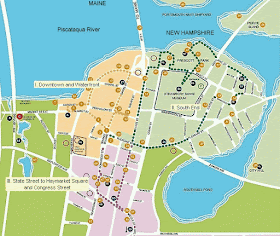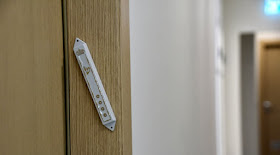And strange High Holidays they will be - unless our Mashiach arrives beforehand. Can we Jews feel spiritually connected - to each other and to our God - without a physical community? Must we put our faith in Zoom, Skype, and Facebook?
In the meantime, if we're lucky, life goes on. Mr & Mrs Abq Jew's grandkids Vera and Chuck are celebrating birthdays this summer. Last summer (see The Night the Well Ran Dry) we were all together. Not this year.
Therefore
Abq Jew wishes to share
with Vera and Chuck,
and with you, dear readers - the
with Vera and Chuck,
and with you, dear readers - the
Best. Short Story. Ever.
The Fable of the Goat (מעשה העז)
Shmuel Yosef Agnon (שׁ״י עגנון)
The Fable of the Goat (מעשה העז) is one of Agnon's best-known and most-loved works. The story never fails to bring tears to Abq Jew's eyes, for "there is no longer a short way."
The Fable of the Goat (מעשה העז)
Shmuel Yosef Agnon (שׁ״י עגנון)
The tale is told of an old man who groaned from his heart.
The doctors were sent for, and they advised him to drink goat’s milk. He went out and bought a she-goat and brought her into his home. Not many days passed before the goat disappeared. They went out to search for her but did not find her. She was not in the yard and not in the garden, not on the roof of the house of study and not by the spring, not in the hills and not in the fields. She tarried several days and then returned by herself; and when she returned, her udder was full of a great deal of milk, the taste of which was as the taste of Eden. Not just once, but many times she disappeared from the house. They would go out in search of her and would not find her until she returned by herself with her udder full of milk that was sweeter than honey and whose taste was the taste of Eden.
One time the old man said to his son, “My son, I desire to know where she goes and whence she brings this milk which is sweet to my palate and a balm to all my bones.” His son said to him, “Father, I have a plan.” He said to him, “What is it?” The son got up and brought a length of cord. He tied it to the goat’s tail.
His father said to him, “What are you doing, my son?”
He said to him, “I am tying a cord to the goat’s tail, so that when I feel a pull on it, I will know that she has decided to leave, and I can catch the end of the cord and follow her on her way.” The old man nodded his head and said to him, “My son, if your heart is wise, my heart too will rejoice.”
The youth tied the cord to the goat’s tail and minded it carefully. When the goat set off, he held the cord in his hand and did not let it slacken until the goat was well on her way and he was following her. He was dragged along behind her until he came to a cave. The goat went into the cave, and the youth followed her, holding the cord. They walked thus for an hour or two, and maybe even a day or two. The goat wagged her tail and bleated, and the cave came to an end.
When they emerged from the cave, the youth saw lofty mountains, and hills full of the choicest fruit, and a fountain of living waters that flowed down from the mountains; and the wind wafted all manner of perfumes. The goat climbed up a tree by clutching at the ribbed leaves. Carob fruits full of honey dropped from the tree, and she ate of the carobs and drank of the garden’s fountain.
The youth stood and called to the wayfarers: “I adjure you, good people, tell me where I am, and what is the name of this place?” They answered him, “You are in the Land of Israel, and you are close by Safed.”
The youth lifted up his eyes to the heavens and said, “Blessed by the Omnipresent, blessed be He who has brought me to the Land of Israel.” He kissed the soil and sat down under the tree.
He said, “Until the day breath and the shadows flee away, I shall sit on the hill under this tree. Then I shall go home and bring my father and mother to the Land of Israel.” As he was sitting and feasting his eyes on the holiness of the Land of Israel, he heard a voice proclaiming:
“Come, let us go out to greet the Sabbath Queen.”
And he saw men like angels, wrapped in white shawls, with boughs of myrtle in their hands, and all the houses were lit with a great many candles. He perceived that the eve of Sabbath would arrive with the darkening, and that he would not be able to return. He uprooted a reed and dipped it in gallnuts, from which the ink for the writing of the Torah scrolls is made. He took a piece of paper and wrote a letter to his father:
“From the ends of the earth, I lift up my voice in song to tell you that I have come in peace to the Land of Israel. Here I sit, close by Safed, the holy city, and I imbibe its sanctity. Do not inquire how I arrived here but hold on to this cord which is tied to the goat’s tail and follow the footsteps of the goat; then your journey will be secure, and you will enter the Land of Israel.”
The youth rolled up the note and placed it in the goat’s ear. He said to himself: When she arrives at Father’s house, Father will pat her on the head, and she will flick her ears. The note will fall out, Father will pick it up and read what is written on it. Then he will take up the cord and follow the goat to the Land of Israel.
The goat returned to the old man, but she did not flick her ears, and the note did not fall. When the old man saw that the goat had returned without his son, he clapped his hands to his head and began to cry and weep and wail, “My son, my son, where are you? My son, would that I might die in your stead, my son, my son!”
So he went, weeping and mourning over his son, for he said, “An evil beast has devoured him; my son is assuredly rent in pieces!”
And whenever he saw the goat, he would say, “I will go down to my grave in mourning for my son.” The old man’s mind would not be at peace until he sent for the butcher to slaughter the goat. The butcher came and slaughtered the goat. As they were skinning her, the note fell out of her ear. The old man picked up the note and said, “My son’s handwriting!”
When he had read all that his son had written, he clapped his hands to his head and cried, “Vay! Vay! Woe to the man who robs himself of his own good fortune, and woe to the man who requites good with evil!” He mourned over the goat many days and refused to be comforted, saying, “Woe to me, for I could have gone up to the Land of Israel in one bound, and now I must suffer out my days in this exile!”
Since that time the mouth of the cave has been hidden from the eye, and there is no longer a short way. And that youth, if he has not died, shall bear fruit in his old age, full of sap and richness, calm and peaceful in the Land of the Living.

































